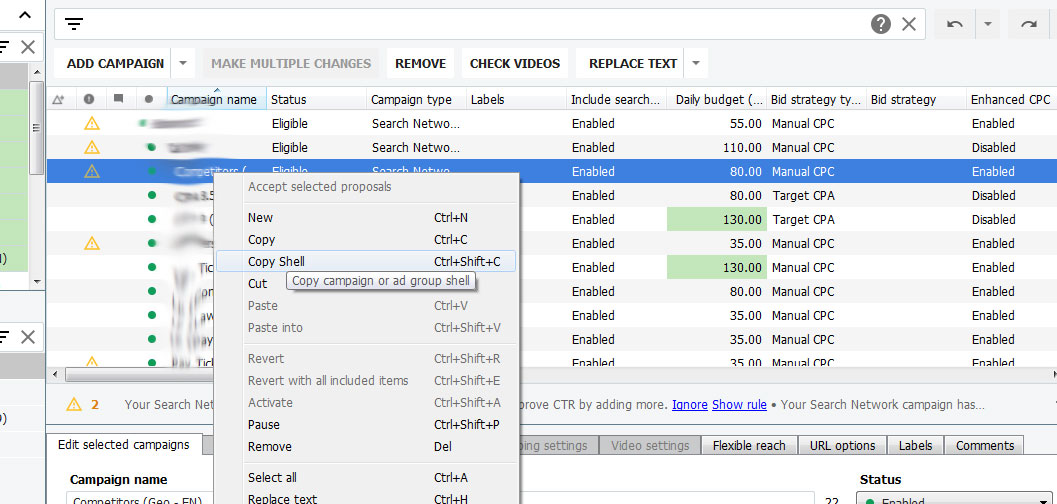
Designing packaging for a product's products is a major aspect of its design. The package copy is the first piece written content on a product packaging package. The Package copy is the first piece of written content on a product package. Safety information and symbols are other important elements. Packaging design also includes designing a front panel that is informative. Using these tips will make your packaging content stand out from the competition.
The package copy is the first piece written on a product.
It is crucial for companies to have effective package copy. This is the first piece that a potential customer will read. Package copy has three seconds to grab the attention of the reader and get their understanding, unlike a brochure, website or magazine article. A professional copywriter is a must-have.

Packaging copy should clearly communicate the benefits of the product. It should be succinct, simple to understand, and concise. Use bold text and italics to emphasize the product's strengths. Numeroted lists are another way to quickly convey important information. To make your copy more attractive, you could also use brand-specific symbols or logos.
Package labeling symbols
Packaging labeling helps consumers find out what their products contain by using symbols. These symbols are used for a variety of products, including cosmetics and foods. Some products can have multiple symbols depending upon their ingredients or use. The symbol "E" denotes a product with average fill, and "L" denotes a liquid.
Some symbols can also be used to warn people about hazards. Pictograms are required on certain chemicals' package labels under the Globally Harmonised System of Classification and Labelling of Chemicals. These symbols are usually in the form or rhombuses within an red border. These symbols warn of possible health and environmental hazards as well as potential toxicity. They warn of potential adverse effects on aquatic ecosystems.
Designing a front panel with descriptive text
The front panel is intended to capture a consumer's attention, so it should focus on the most important points. It shouldn't contain too much copy. This will only distract the consumer from the important points. Secondary points should also be included on a support panel. Lists are better than paragraphs.

The front panel should have a headline that will attract the eye and get the reader to read more. It is important to ensure that the copy is accurate and concise. Because there are limited space and it is difficult to communicate your message quickly, it must also be clear. The copy should be clear and concise.
FAQ
What do you need to know about print advertising?
Print advertising is an effective medium for communicating with consumers. Many companies use print advertising to promote their products. The key objective is to capture the attention of the consumer.
Print ads are usually short (one page) and contain text, pictures, logos, and other graphics. They can also include sound and animation as well video and hyperlinks.
The following categories are the most common types of print advertisements:
1. Brochures are large-format printed materials that are designed to draw people into shops. Brochures often feature eye-catching designs and colorful photos.
2. Catalogues - These are smaller versions of brochures. They are typically sent to customers who have requested information on specific items.
3. Flyers – These are small pieces made of paper that are distributed at events, such as fairs or concerts. Flyers can be handed out at retail outlets for a small fee, but are generally free.
4. Posters – These are larger versions for flyers. They are often displayed on walls, fences, or buildings. They are usually created using computer software programs designed to catch passersby's attention.
5. Direct mail: These are postcards or letters that are sent directly by post to potential customers. These are sent to customers periodically by businesses to remind them about their business.
6. Newspaper ads - These ads are published in magazines and newspapers. These ads are often quite long and include both text and images.
What is an advertising campaign?
A campaign is a series advertising messages that are designed to promote a product. It could also refer the entire production of such advertisements.
The Latin word for selling is "ad." Marcus Terentius Varro (116–27 BC), was the first to make it a verb, meaning "to make sale".
Advertising campaigns are typically done by large agencies and companies. Advertising campaigns can involve many media types, such as television, radio, print, and the internet.
Advertising campaigns usually last several months, and they have specific goals. Advertising campaigns can have different goals. Some are focused on increasing sales while others generate awareness.
What are the basics of internet advertising?
Internet advertising is a key part of any business strategy. It is a cost-effective way for companies to reach potential customers. However, there are many different types of internet advertising available. Some are free and some require payment.
There are many ways to advertise online, including pop-up ads and banner ads. Each method comes with its own set of advantages and disadvantages.
Why should you use social media to promote your business?
Social Media Marketing (SMM) allows you to reach customers where they are - on social networks such as Facebook, Twitter, LinkedIn, YouTube, Google+, etc. You can also target specific groups within these networks using keywords.
Because this advertising method costs less online than traditional methods, it's more cost-effective. It also allows you to build strong relationships with your current and potential clients.
It is simple to get started using social media for your business promotion. All you need to get started with social media is a smartphone or a computer, and an internet connection.
What are the basics of radio advertising?
It is important that you understand the differences between media. Remember that all media types are complementary, not competing.
Radio is best used as an extension of television advertising. It enhances television by reinforcing important messages and providing additional details.
Radio listeners may find TV commercials too long. Radio ads are typically shorter and less costly.
Is it possible to get traffic for free?
Refers to traffic that is free from search engine results. This type of traffic is called natural or organic traffic. There are many ways you can get free traffic.
Article marketing is one of the most effective ways to get free traffic. This is because it has a very low cost per click (CPC). Paying for ads is often more expensive than CPC. Article marketing can also be referred to content marketing.
Social Media Marketing - These social media sites, such as Facebook, Twitter or LinkedIn, allow you to advertise your business. These platforms allow you to share updates, photos, and establish relationships with potential customers. Many businesses pay to advertise on social media sites because they want to reach more people at a cheaper price.
Blogging - Another great way to generate traffic is blogging. You'll attract visitors if you write quality content that people enjoy reading. You can start to monetize your blog with the sale of products or services after you have attracted readers.
Email Marketing - Email marketing has been around since the early days of the Internet, but today it still remains one of the best ways to drive traffic to your website. You can grow your list and eventually sell to subscribers by sending them emails frequently.
What is advertising's primary purpose?
Advertising isn't just about selling products. It's also about creating an emotional connection among your customers and you.
Advertising is communicating ideas and values. Advertising is about changing minds and attitudes. And it's about building relationships.
It's all about helping people feel good.
However, if your customers don't want what you have to offer, you won't be able to sell anything.
It is essential to first understand the needs and purchasing habits of your customer before you embark on any advertising project.
This allows you to design ads that resonate well with them.
Statistics
- It's 100% reliant on your website traffic. (quicksprout.com)
- It collects money from the advertisers, keeps 32% for its role in facilitating the process, and the remaining 68% goes to the publisher (you). (quicksprout.com)
- In 1919 it was 2.5 percent of gross domestic product (GDP) in the US, and it averaged 2.2 percent of GDP between then and at least 2007, though it may have declined dramatically since the Great Recession. (en.wikipedia.org)
- Nonetheless, advertising spending as a share of GDP was slightly lower – about 2.4 percent. (en.wikipedia.org)
External Links
How To
How does one place an advertisement on a billboard?
While billboards have existed since the late 1800s they became more popular after World War II, when they were installed along roadsides and highways. Many billboards include text advertising and others may also display photographs or artwork. Most billboards are static. However, others display messages that can change often, such as weather forecasts or stock prices.
The majority of billboards are outside displays. However, there are indoor versions. Outdoor billboards usually face traffic passing by them at least several times per day, while indoor ones may only be seen once every few years. A "cubic" outdoor billboard is the most popular type. It is made up of three layers: two sheets of glass sandwiched between a layer of fiberglass mesh and one sheet of glass. This design allows air circulation through the billboard. It keeps it cool during hot weather and warm during cold.
Advertisers pay companies like Billboard Advertising Inc., which owns and operates many of North America's largest billboard advertising firms, to put their ads up on their billboards. These companies then offer space on their billboards for advertisers. These spaces can be purchased by advertisers based upon how much advertising they are willing to spend. Advertisers often select the best places for their ads based upon where people walk and drive the most.
Billboard Advertising Inc. sells advertising space. It also has agreements with local governments to place signs on public property. Some cities allow billboards wherever they are allowed, while others prohibit them from certain areas. Chicago, for instance, has a restriction that billboards cannot be more than 1,000 feet from any highway. Other cities require that billboards be placed no closer than 500 feet from a school or church.
Billboard Advertising Inc. has contracts for products and services promotion throughout the United States.